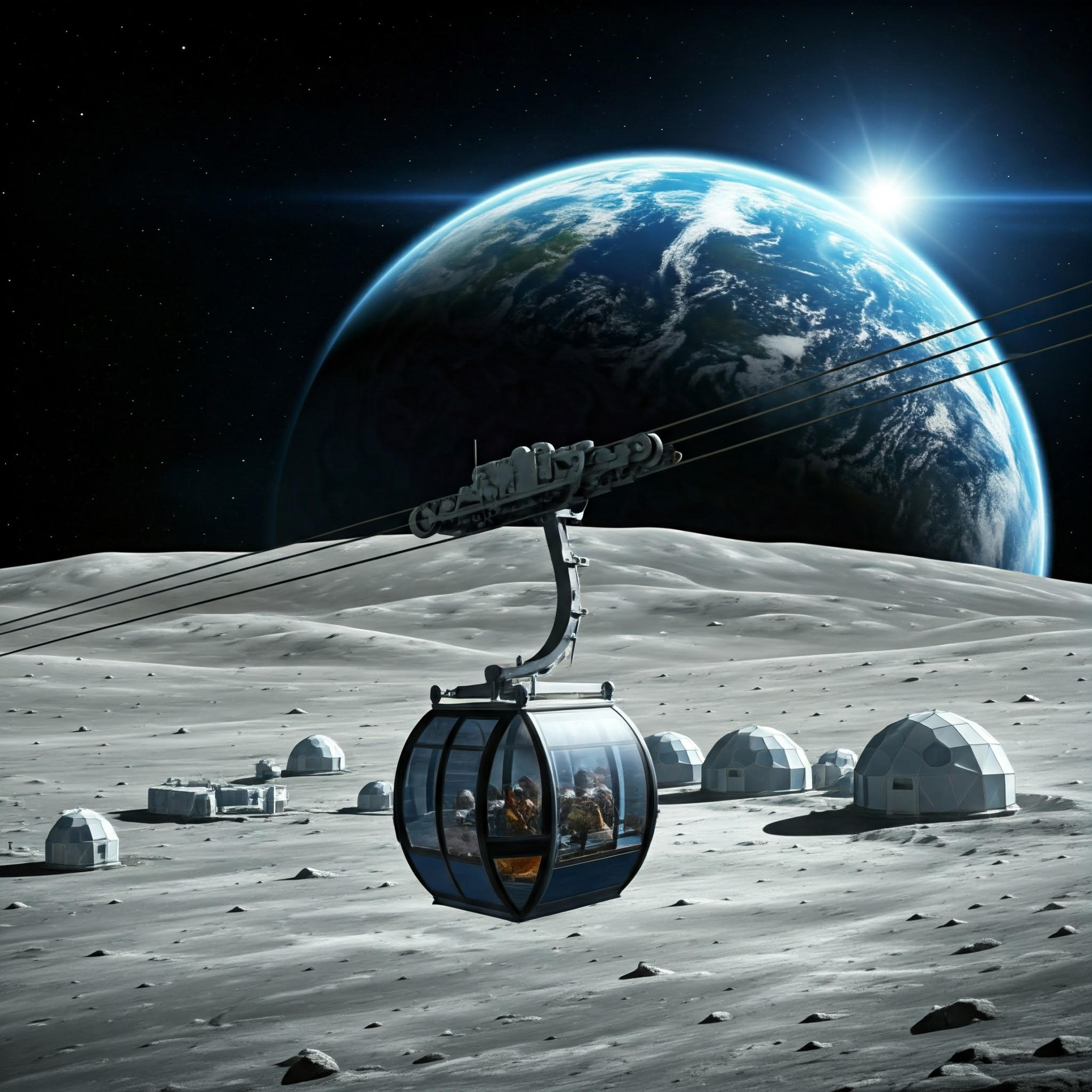Science & Discovery
Taking in the Moon on a Gondola Ride
Gondolas and ziplines may be the first forms of long-distance lunar transportation.
By Christopher Wanjek
As part of NASA’s Apollo 17 mission, astronaut Harrison Schmitt collected samples of the Moon’s surface material, including lunar dust. Credit NASA
Getting around on the Moon is trickier than you might think. Flying isn’t a practical option because of a complete lack of atmosphere to support a glider or balloon. Trains could work, but how do we lay miles upon miles of rails? This would have to come much later, after we are mining iron on the Moon.
Those iconic Moon buggies of Apollo missions 15, 16, and 17—technically called Lunar Roving Vehicles—seem like a lot of fun, but they are impractical, too. For starters, you cannot travel quickly on wheels across the Moon’s rugged, uneven surface. But the real showstopper seems to be the menacing dust on the lunar surface kicked up by the wheels, which compromises the machinery.
Thus, enter the seemingly fantastical idea of gondolas on the Moon. Yes, NASA is considering this for its Artemis Program, its plan to return to the Moon and establish permanent bases within the next ten years.

Cruising in style—and in safety, above the harsh lunar dust—in a gondola.
[Image generated using Google Gemini, December 8, 2024]
A team of NASA engineers at the Langley Research Center in Hampton, Virginia, describe the gondola and other downright practical ideas in a white paper, or Technical Memorandum, published in May 2024 titled “LuZip: Lunar Zip-line, Gondola and Cable-based Transportation for Artemis Moon Missions Mobility and Dust Avoidance.”
Those last two words—dust avoidance—comprise the key concept that will drive much of what humans can do on the Moon. Dust is a poor description of this stuff, actually. The so-called dust consists of razor-sharp grains of regolith chiseled over eons by cosmic and solar radiation. It clings to equipment and spacesuits; abrasive like asbestos, it can slice through lung cells if inhaled, causing a sort of lunar regolithosis, if I may coin a term.
Eugene Cernan, the last man to have walked on the Moon, captured the enormity of the dust problem in a 1973 technical debrief of NASA’s Apollo 17 mission: “I think dust is probably one of our greatest inhibitors to a nominal operation on the Moon. I think we can overcome other physiological or physical or mechanical problems except dust.”
The dust even jammed the astronauts’ zippers, jeopardizing the integrity of their spacesuits. Spacesuits and equipment might have failed if he and Harrison Schmitt, his partner on the lunar surface, had stayed on the Moon for a little longer.
With a gondola system, we would be above the dust. These need not be very high—just a few feet above the lunar surface would suffice. Less infrastructure is needed for gondolas compared to rails. While the NASA white paper doesn’t go into specifics, the low gravity on the Moon means that posts could be placed farther apart than they would need to be on Earth. They could be connected by lightweight cable. The lack of air resistance means the gondolas could move quite rapidly, too.
Although far less glamorous, a zipline—perhaps more like a clothesline—would be even more practical. In this scenario, astronauts connect themselves to the cable to be towed while dangling safely above the dust.
Then there is the plan to move cargo around. In May 2024, NASA publicized a wholly different idea for a cargo train on the Moon: called FLOAT, or Flexible Levitation on a Track, the concept had been discussed for several years. In this system, robots unroll a magnetic carpet upon which small cargo containers could float, analogous to a maglev train.
These ideas may sound fantastical, but they offer practical solutions to the unique challenges posed by the harsh lunar environment. Indeed, such imaginative yet practical designs could be the key to unlocking the Moon’s potential as a platform for further exploration of our solar system.
Christopher Wanjek is a Baltimore-based science writer and author of Spacefarers: How Humans Will Settle the Moon, Mars, and Beyond (Harvard University Press, 2020)
Mercury is an advertisement-free publication. If you are interested in supporting Mercury, please email us.




